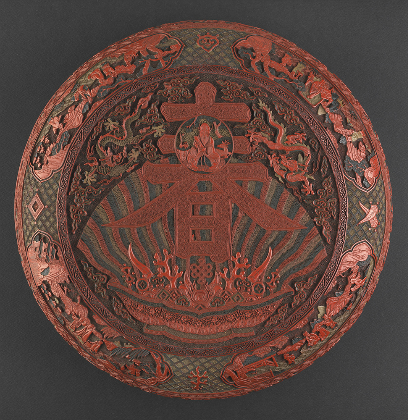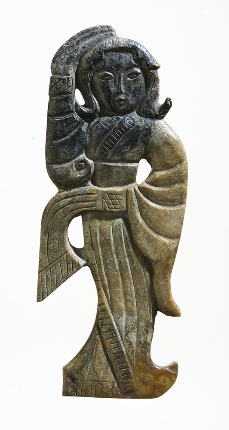The Heart of the Beauty
EXHIBITION
The Ferenc Hopp Museum of Far Eastern Art offers a selection of its 8000 Chinese objects
to celebrate the first 65 years the diplomatic relations between China and Hungary.
| Magyar Múzeumok Online |
2014-10-20 17:19 |
 The exhibition focuses on the five most important materials which are used to create different objects: jade, china, enamel, paper and silk. They are all closely associated with China, and their use as well as their invention is related to Chinese art. Besides guiding the visitors through the symbolism and the ritual or mundane use of these objects, the exhibition also explains the philosophical background of the objects with the help of philosophical and literary works.
The exhibition focuses on the five most important materials which are used to create different objects: jade, china, enamel, paper and silk. They are all closely associated with China, and their use as well as their invention is related to Chinese art. Besides guiding the visitors through the symbolism and the ritual or mundane use of these objects, the exhibition also explains the philosophical background of the objects with the help of philosophical and literary works.
Jade objects are also known as the diamonds of the East in Chinese culture. They have the same role as precious metals have in Western cultures. Jade evokes the powers of heaven and earth symbolising the positive aspects of power with its transparency, durability and indestructibility.
Chinese porcelain is admired in the West for its formal variability, splendid ornaments, majestic material, clinking sound and for its whiteness. It is no coincidence that it received the name white gold while it was arriving in larger and larger quantities in Europe from the beginning of the 16th century.
 Enamel has been used for preserving wooden, bamboo and textile objects for more than 2500 years in China. Since it creates a water-proof layer on a surface, dishes, furniture and even coffins were covered with it. Red enamel became popular in the 14th century and remained so until the 18th, however, other enamel colours like yellow, green, brown and black, were also used to make the ornaments more interesting. The most sophisticated and precious pieces were produced in the emperor’s workshops for his own household.
Enamel has been used for preserving wooden, bamboo and textile objects for more than 2500 years in China. Since it creates a water-proof layer on a surface, dishes, furniture and even coffins were covered with it. Red enamel became popular in the 14th century and remained so until the 18th, however, other enamel colours like yellow, green, brown and black, were also used to make the ornaments more interesting. The most sophisticated and precious pieces were produced in the emperor’s workshops for his own household.
In 105 AD the invention of paper was announced to the emperor, who ambitiously started to use and spread this novelty. Firstly official documents and religious texts were written on it, then around 600 AD printing started to make use of paper. From the 13th century on it became widespread in traditional Chinese painting allowing painters to apply a more dynamic painting style.
The history of silk also stretches 7000 years providing materials for the garments of the rich and surface for paintings. All the typical forms of forms (scrolls, albums, fan) and leitmotifs (landscape, bird-flower and figurative pictures) of Chinese silk painting are featured in this exhibition.